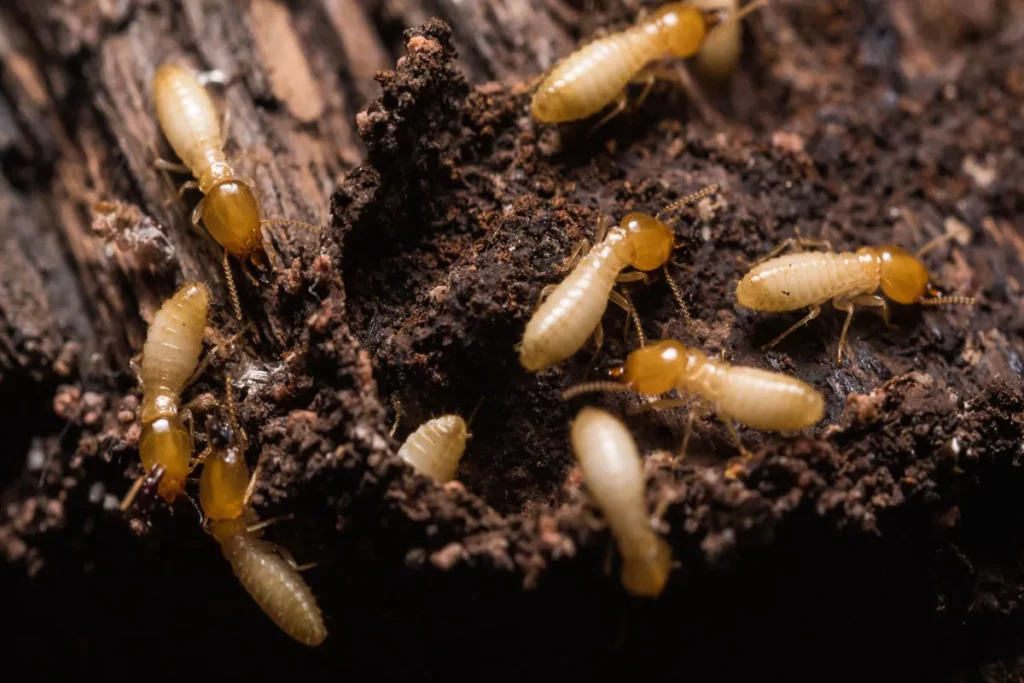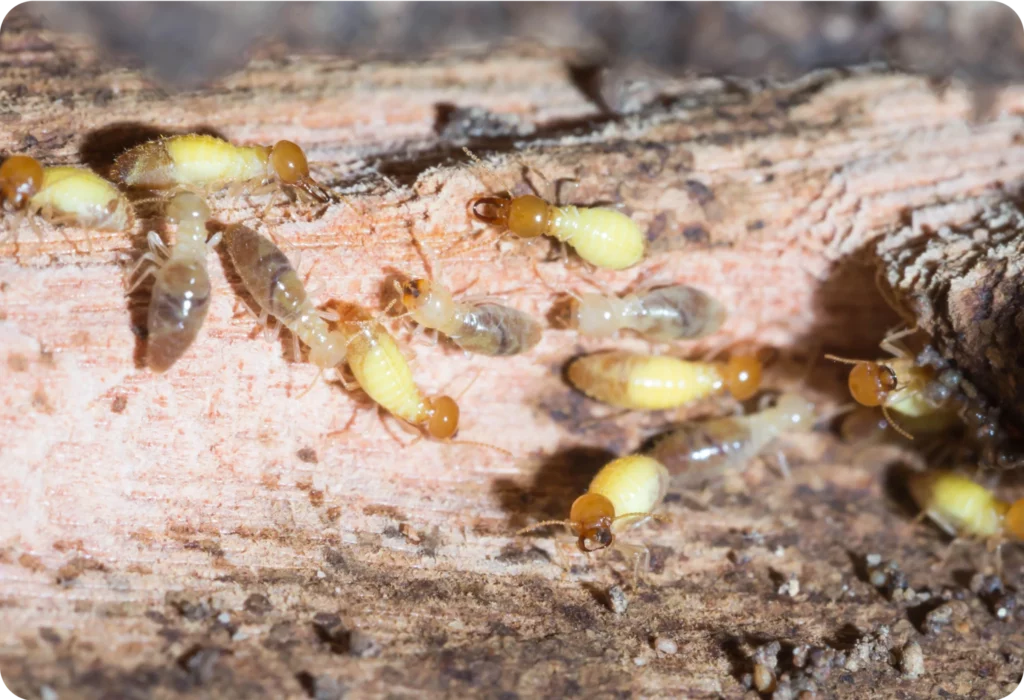What Are the Risks of Termite Infestations in Sydney?
Sydney homeowners face significant threats from termite infestations due to the city’s classification as a high-risk zone for termite activity. These silent destroyers can compromise the structural integrity of properties, causing thousands of dollars in damage before residents even notice their presence.
The termite risk Sydney presents is particularly concerning because these pests operate beneath the surface, tunnelling through timber frames, flooring, and support structures without immediate visible signs. A single colony can contain millions of termites sydney working 24/7 to consume the cellulose in wood, potentially weakening a home’s foundation within months.
Homeowners should be deeply concerned about termites for several critical reasons:
- Financial devastation: Repairs can cost tens of thousands of dollars, with extensive damage sometimes exceeding $100,000
- Insurance limitations: Most home insurance policies specifically exclude termite damage from coverage
- Property devaluation: A history of termite problems can significantly reduce resale value
- Safety hazards: Severe structural damage may render parts of a home unsafe for occupancy
The question “How often should you schedule a pest control termite treatment in Sydney?” becomes essential when considering these risks. Understanding proper inspection and treatment schedules can mean the difference between minor preventative costs and catastrophic repair bills.
Why Do Termites Thrive in Sydney’s Climate?
Sydney’s warm, humid climate creates perfect breeding conditions for termite colonies. The city experiences mild winters and hot, humid summers with average temperatures ranging from 18°C to 26°C throughout the year. This consistent warmth allows termites to remain active year-round, unlike colder regions where termite activity slows during winter months.
The high humidity levels, particularly during summer when humidity can exceed 65%, provide the moisture termites need to survive. These pests require water to maintain their soft bodies and build their characteristic mud tunnels. Sydney’s coastal location and frequent rainfall create damp soil conditions that subterranean termites exploit to establish underground colonies.
Sydney termite risk is amplified by the city’s lush vegetation and wooden structures. The combination of moisture-retaining soil, abundant timber in residential areas, and warm temperatures makes Sydney one of Australia’s highest-risk zones for termite activity that residents must guard against.

Common Termite Species in Sydney
Three primary species pose threats to Sydney properties:
- Coptotermes acinaciformis (Australian subterranean termite) represents the most destructive species in the region. These termites build massive underground colonies containing millions of individuals and can consume timber at alarming rates. They’re responsible for approximately 70% of termite damage to Australian homes.
- Schedorhinotermes intermedius (grey termite) ranks as the second most common destructive species. These termites prefer damp, decaying wood but will attack sound timber when food sources become scarce.
- Nasutitermes exitiosus (tree termite) typically nests in tree stumps and dead trees but may attack buildings when their natural food sources diminish. They build distinctive mound-shaped nests visible above ground.
Each species exploits Sydney’s favourable climate differently, but all benefit from the consistent warmth and moisture that characterise the region’s environment. It’s worth noting that while these are the most common species, other types such as white ants also pose significant threats to properties in the area.
How Often Should Homeowners Get Their Properties Inspected for Termites?
Most Sydney properties are advised to have a termite inspection once a year. This yearly schedule allows for proper monitoring to detect termite activity before it leads to significant damage, especially in Sydney’s areas that are highly susceptible to termites.
According to the Building Code of Australia (BCA), newly built homes must have systems in place to manage termites, which includes a requirement for professional inspections at least once a year. This regulation acknowledges the serious danger termites pose to the structural stability and value of homes in Australia.
The decision to inspect for termites every twelve months strikes a balance between comprehensive protection and practical cost management. Termites can establish colonies and cause considerable damage within a year, making this timeframe critical for early detection. Professional inspectors examine:
- Foundation areas and spaces beneath the floor
- Roof voids and wall cavities
- Wooden structures and fittings
- Areas around the property perimeter
- Places prone to moisture near plumbing
Even properties that already have chemical barriers or baiting systems in place still need this annual inspection. Over time, these protective measures can weaken, develop gaps, or fail to stop determined termite colonies from finding other ways in. Regular inspections ensure that existing treatments remain effective and identify any new weaknesses that may have arisen since the last assessment.
When Is It Necessary to Schedule More Frequent Termite Inspections?
Frequent termite inspections every six months become essential when specific risk factors elevate your property’s vulnerability to infestation. A six-month termite check provides enhanced protection in circumstances where standard annual inspections may not catch problems quickly enough.
Properties requiring more frequent inspections include:
- Homes with a documented history of previous termite activity or infestations
- Properties located in neighbourhoods where neighbouring homes have experienced termite problems
- Buildings with persistent moisture issues, water leaks, or poor drainage systems
- Homes with extensive timber structures or older wooden features
- Properties situated near bushland, tree stumps, or areas with high natural termite populations
Homes that have undergone termite treatment within the past two years benefit from six-monthly monitoring to verify the treatment remains effective. Water damage creates ideal conditions for termite colonies, making properties with plumbing issues particularly susceptible.
The investment in more frequent termite inspections proves worthwhile when balanced against the potential damage termites can inflict within a short timeframe. Subterranean termites work rapidly, and a colony can cause substantial structural damage between annual inspections. Properties displaying any combination of these risk factors warrant the additional scrutiny that six-monthly inspections provide, ensuring early detection before minor issues escalate into costly repairs.
What Are Some Common Signs That Indicate a Termite Infestation?
Identifying termite infestation early requires knowing what visual clues to watch for around your property. Termites often work silently behind walls and beneath floors, but they leave telltale signs that alert homeowners to their presence.
1. Paint and Surface Damage
Peeling or bubbling paint on walls and door frames frequently signals termite activity beneath the surface. The moisture termites introduce whilst creating their tunnels causes paint to lift away from timber, creating an appearance similar to water damage.
2. Structural Indicators
Timber that sounds hollow when tapped indicates internal tunnelling by termites. Decayed wood with visible tunnels or galleries running through it confirms active or past infestation. Doors and windows that suddenly stick or become difficult to open often result from termite damage warping the frames.
3. Mudding and Shelter Tubes
Brown mud-like material near entry points, foundations, or along walls serves as protective tunnels termites build to travel between soil and food sources. These pencil-width tubes are among the most reliable signs of termites.
4. Swarming Activity
Swarms of flying insects resembling winged ants, particularly during warmer months, indicate a mature termite colony nearby. Discarded wings near windowsills or doors suggest termites have entered your property to establish new colonies. These signs of termites demand immediate professional inspection.
How Long Do Termite Treatments Last and Why Are Follow-Up Inspections Important?
Most termite treatments maintain their effectiveness for 5 to 8 years, depending on the specific method applied to your property. Chemical barriers and termite baiting systems both fall within this timeframe, though environmental factors and soil conditions can influence their longevity.
The extended lifespan of these treatments doesn’t eliminate the need for vigilance. Termites are persistent creatures that constantly search for new entry points, and barriers can degrade or develop gaps over time. Follow-up termite inspections serve as your early warning system, catching potential breaches before they escalate into costly infestations.

Why regular monitoring matters:
- Chemical barriers can break down due to soil movement, landscaping changes, or water penetration
- Termites may discover untreated areas or gaps in the protection zone
- New construction or renovations can create vulnerable access points
- Environmental changes around your property can attract termite colonies
Annual inspections allow pest control professionals to assess whether your existing treatment remains effective. They can identify weak spots in your defence system and recommend targeted retreatment if necessary. This proactive approach costs significantly less than waiting until termites have already established themselves within your home’s structure.
Treating termite protection as a one-time solution leaves your property vulnerable during the later years of treatment longevity. Regular follow-up inspections ensure continuous coverage throughout the treatment’s lifespan and beyond.
What Financial Advantages Come with Regular Termite Inspections?
The cost of termite inspection in Sydney typically ranges from $200 to $400 annually, representing a minimal investment compared to the devastating financial impact of undetected termite damage. Termite damage repair costs can easily escalate to $10,000 or more, with severe infestations requiring structural repairs exceeding $50,000.
The financial disparity becomes stark when considering:
- Annual inspections cost approximately $300 on average
- Minor termite damage repairs start at $3,000
- Major structural repairs range from $15,000 to $100,000
- Most home insurance policies exclude termite damage coverage
How often should you schedule a pest control termite treatment in Sydney? The answer becomes clear when examining the economics. Spending $300 yearly on inspections versus facing potential five-figure repair bills makes routine inspections one of the most cost-effective home maintenance decisions.
Early detection through regular inspections allows for targeted treatment of small colonies before they cause extensive damage. A $2,000 treatment addressing an early-stage infestation prevents the need for timber replacement, structural reinforcement, and cosmetic repairs that multiply costs exponentially.
Property values also benefit from documented inspection records. Homes with consistent termite inspection histories command better prices and facilitate smoother sales processes, as buyers gain confidence in the property’s structural integrity.
Related : Top 5 Reasons You Should Book a Termite Inspection in Sydney Before Summer
